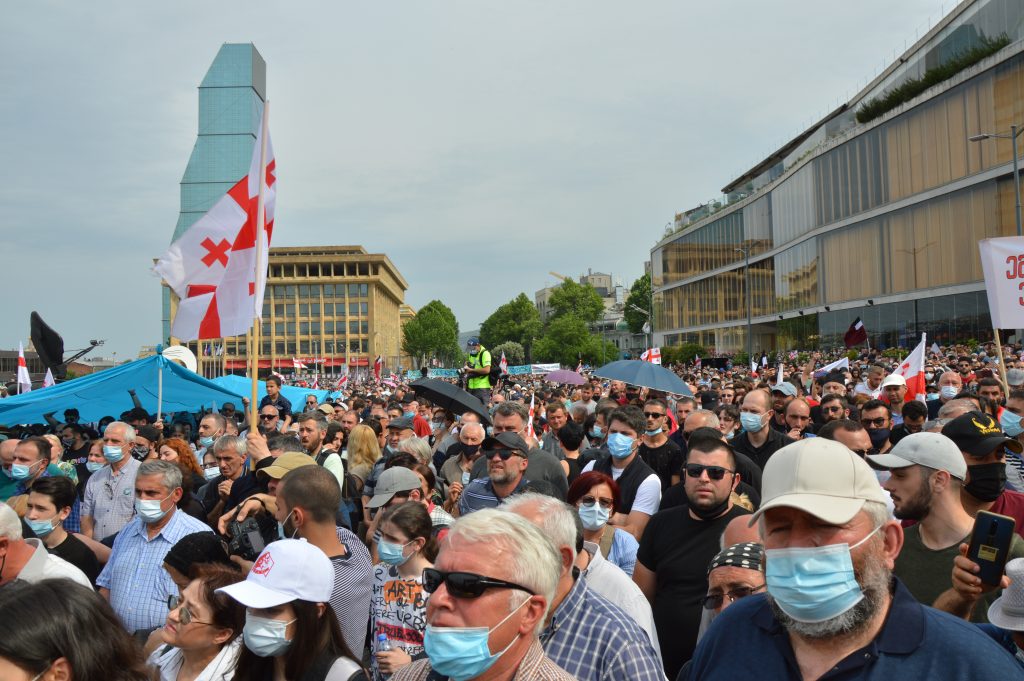The Economy Ministry said on June 2 the Namakhvani Hydropower Plant project “is one of the best-researched” in Georgia’s energy sector, citing studies conducted by four consulting companies during 2007 – 2019 – all “confirming the feasibility” of the project.
The statement comes amid months-long tense protests in western Georgia, as those opposing the construction cast doubts on the socio-economic and environmental viability of the project, among others.
According to the Economy Ministry, a 2007 World Bank-funded environmental assessment on developing Georgia’s energy system over the next 15 years, conducted by the “Serbian-Italian” South East Europe Consultants (SEEC) company, found Namakhvani HPP to be “the best project to be added to the Georgian energy system.”
Another 2015 environmental assessment commissioned by the Georgian Gamma Consulting company said the socio-economic benefits of implementing the project far outweigh the potential harms for the country and the region, the Economy Ministry claimed.
The Ministry also recalled an August 2018 energy strategy document for Georgia drafted by global consulting firm McKinsey & Company, which dubbed the Namakhvani project “an economically viable energy object” that “fully meets international standards.” Noteworthy that the Economy Minister at the time, Giorgi Kobulia, appointed in July 2018, had previously for 18 years worked for the same consulting firm, mostly working out of its Moscow office.
Most recently, a 2019 EBRD-commissioned Georgian electricity market assessment, conducted by the global consulting company NERA, said the characteristics of the Namakhvani HPP “allow the project to be built according to the so-called least-cost methodology,” with the fiscal burden being “not critical when considering other positive factors of the project,” the Economy Ministry reported.
An analysis of the country’s previous experiences in the energy sector in Georgia’s Energy Policy Concept document, commissioned by USAID Energy Program and published November 25, 2020, highlighted that strategic decisions in the field “are not made on the basis of relevant and sufficient information analysis and research,” adding that Georgia lacks systems and procedures “for providing expert, research, and professional support for decision-making.”
Background
The Namakhvani HPP Project in Rioni River Valley of western Georgia encompasses two separate HPPs on the Rioni River, the longest river flowing solely within the Georgian boundaries: the Lower Namakhvani HPP (333 MW) and the Upper Namakhvani HPP (100 MW).
Local protests with a focus on environmental concerns gradually grew into a major movement, with massive protests against planned construction. Those opposing the HPP claim, argue that the environmental and socio-economic impacts of the project have been understudied, among others.
The protesters are currently demanding that the government terminate its contract with the HPP investor, and that Enka Renewables, the company behind the construction, leave the Rioni Valley. The protesters also called for launching criminal investigations against officials involved in drafting and signing the deal, including Economy Minister Natia Turnava, as well as imposing a moratorium on similar projects until a coordinated energy policy is developed.
Follow our Namakhvani tag for earlier developments and background on the controversial project.
This post is also available in: ქართული (Georgian) Русский (Russian)

